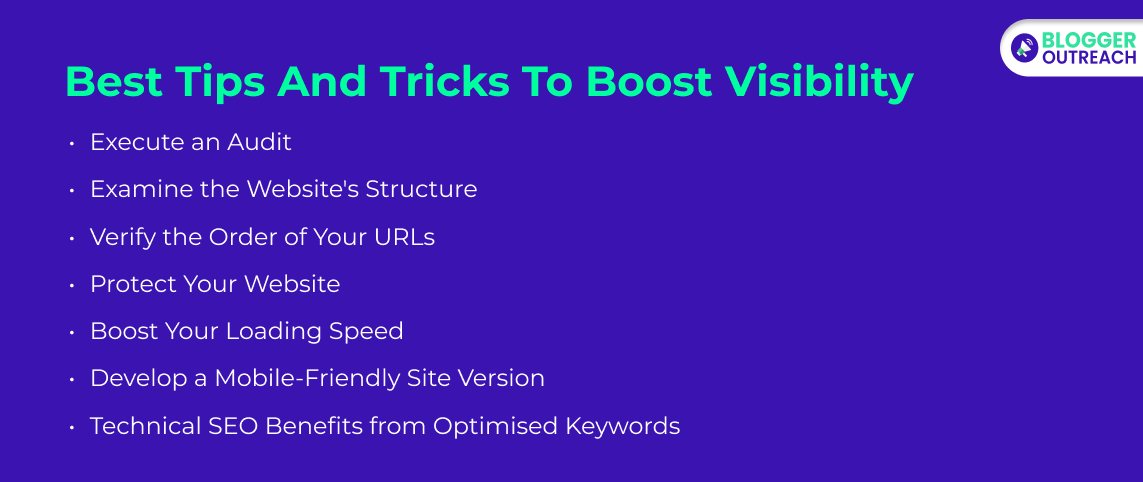Table Of Content
As a business, you invest a lot of time and effort into designing your ecommerce site’s aesthetic appeal to attract visitors to your product pages. However, developing a visually beautiful website is just half the battle; you must also have a solid technological foundation.
This implies that a crucial element of your e-commerce website is technical search engine optimization or SEO.
Optimizing your website’s backend is crucial for guaranteeing a satisfying user experience on the front end. If you want to start using technical SEO for e-commerce, use our best tips to take control of the e-commerce industry.
What Is Technical SEO?

The technique of optimizing your website, especially for search engine crawlers and indexing, is known as technical search engine optimization (technical SEO). It facilitates straightforward search engine interpretation of your website.
Technical SEO is a crucial component of your SEO services package, and your entire eCommerce SEO approach is technical SEO. Optimizing a website’s architecture is its primary objective.
Why Is It Important For E-Commerce Businesses?
Technical SEO is crucial for e-commerce websites because it informs search engines that your website is valuable and encourages them to rank it higher. This step-by-step guide on technical SEO will help you raise your online profile and increase traffic to your eCommerce business.
Best Tips And Tricks To Boost Visibility

Search engines prefer eCommerce sites with good technical SEO. Below is a list of suggestions for enhancing technical SEO to help you make your website compliant with search engine guidelines.
1. Execute An Audit
Conduct an SEO audit to find possibilities and address exit points for a better user experience. This guarantees that any new SEO techniques have a solid base for growth. Screaming Frog and SEMrush, two specialized auditing software programs, are excellent resources.
2. Examine The Website’s Structure
A well-structured website helps search engines crawl and index it more easily and directs people in the appropriate path. The higher a site scores, the more logical its structure is. You should reconsider your website’s navigation structure to enhance technical search engine optimization.
Make a hierarchical tree structure map of the pages on your website to see if the pages flow together or not.
In addition, you will have to evaluate URL architecture, internal linking, category and product pages, and navigation menus.
3. Verify The Order Of Your URLs
When an eCommerce site includes thousands of goods, URLs often must be addressed.
The URLs generated by most content management systems (CMS) are usually clumsy and look something like this: http://yourdomain.com/index.php?=6512524=e03=?p=89. (this is an example of a URL and not a real site).
This URL could be better because it doesn’t give search engines any relevant information to rank this page better.
http://www.cycleworks.com/collections/blue-mountain-bike might be a better URL… This example makes it easy to observe the eCommerce website, the product, and the category to which it belongs.
Bonus Tips:
- Make sure you use a focal keyword.
- Keep URLs as brief as possible.
- Define their hierarchy.
- Always hyphenate terms.
4. Protect Your Website
Google prefers secure websites—that is, websites using HTTPS instead of only HTTP prefixes. SSL (Secure Socket Layer) is a common security mechanism HTTPS sites use. It encrypts the connection across a web server and browser so that user data cannot be read even if it is intercepted.
HTTPS enhances user trust, data integrity, website security, and search engine rankings.
Because consumers are more likely to purchase from a safe website they can trust, SSL certificates are crucial to applying technical SEO for eCommerce. Modern website builders typically come with SSL by default.
5. Boost Your Loading Speed
When page load time increases from one to three seconds, the likelihood that people will leave your website increases by 32% (bounce rate).
Thus, a page loading time of no more than two seconds should be the industry standard for eCommerce websites. According to Google, site speed is one of the indications utilized by its algorithms to rank pages.
Whenever feasible, reduce the size of all visual assets without sacrificing quality. It could be beneficial to use quick hosting and minify the web pages on your e-commerce website.
6. Develop A Mobile-Friendly Site Version
US consumers spend 70% of their time on digital media on their cell phones. Approximately three of every four dollars spent online is made using a mobile device.
Additionally, Google moved to a mobile-first index in 2019, which means that when it comes to indexing and ranking SERPs, the mobile version of your eCommerce website is used as the benchmark.
The same website best practices, such as organized pages, compressed graphics, and canonical data, apply to desktop, tablet, and smartphone devices.
However, due to the differing interface of mobile devices, pop-up advertisements that function well on desktop computers could be annoying to mobile users.
7. Technical SEO Benefits From Optimised Keywords
When choosing keywords, consider search engine results, volume, relevancy, competitiveness, and purpose. Popular keywords are hard to compete for since many ranking websites already use them. On the other hand, free resources like WordStream can assist in discovering novel keyword combinations.
Multiple-word long-tail keywords correlate with users’ internet searches and help websites rank better on Google. Take “best running shoes for gym,” for instance. You may use this long-tail term in headers, product descriptions, file names, copy, and picture descriptions.
Concluding Remarks
In conclusion, by adhering to these technical SEO best practices, you can ensure that your e-commerce website is search engine—and user-friendly and builds confidence through security measures.
A well-structured, optimized, and fast website will offer a better user experience and rank higher in search results, resulting in a rise in organic traffic and, eventually, revenue.
Read Also:








